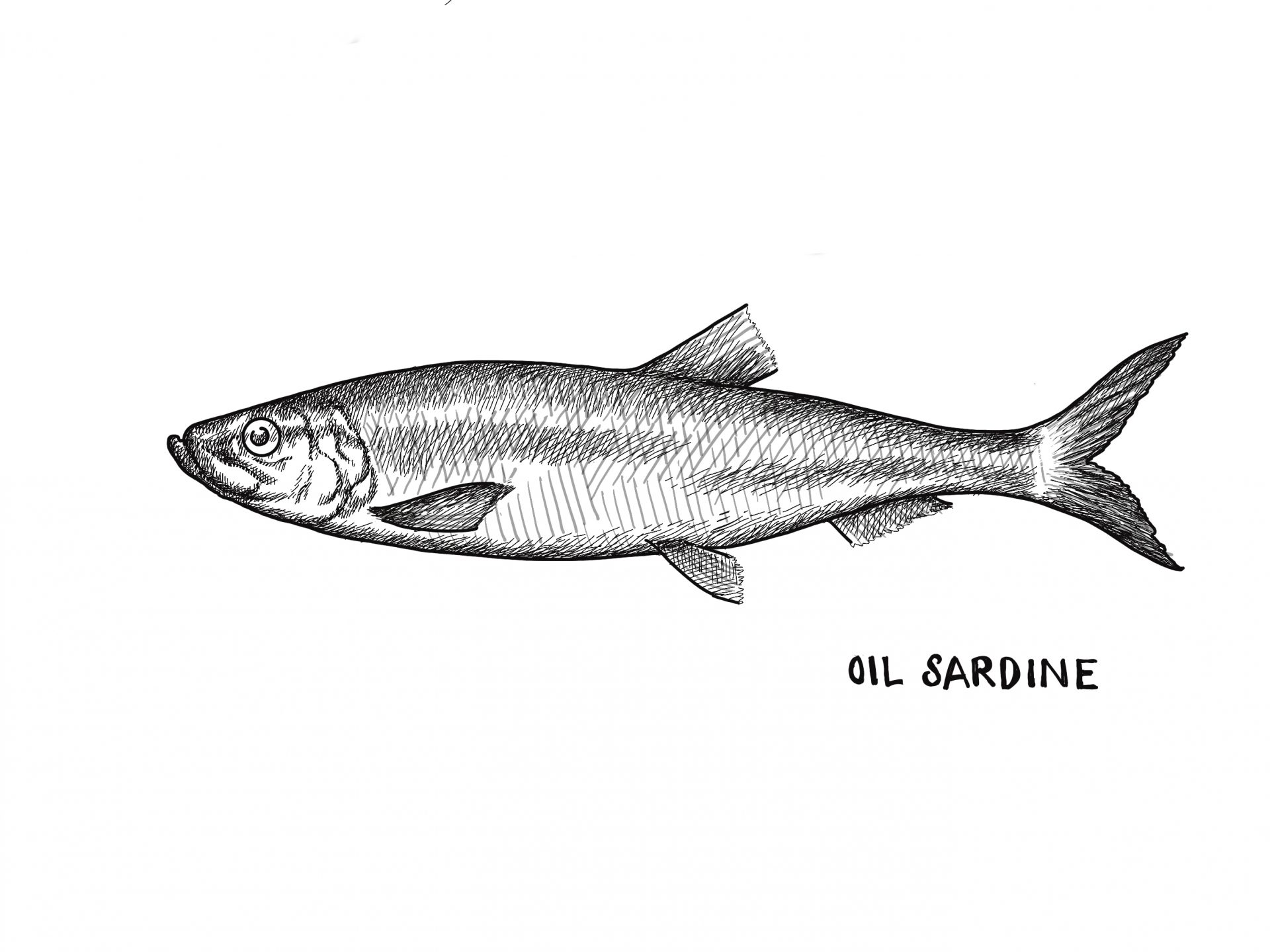Oil sardine drawing by Arun Inamdar
The Indian oil sardine, a staple food in the western state of Kerala, is largely regarded as the protein of the poor. Kerala, once a major producer of the oil sardine, is now largely dependent on the east coast for satisfying its demand for sardines. The fishers of the Coromandel Coast, once reluctant to catch oil sardines (known as Mathi meen in Tamil), now desire it as their main catch.
The emergence of the sardine fishery on the east coast of India has changed the landscape of fishing, along with the lives of the fisherfolk. Catching sardines has changed appetites among artisanal fishers, created new chains of value, brought in new techniques of fishing and, finally, amplified local conflicts around the use of particular types of fishing gear.
Sardinella longiceps (Indian oil sardine) is a small pelagic fish with a limited presence in tropical waters from the Gulf of Aden to the Andaman Islands. It plays an essential role in maintaining the integrity of the marine food web by connecting lower and upper trophic levels. Small pelagic fishes are found in abundance in upwelling zones. The Malabar upwelling zone off the coast of Kerala contributes half of the marine fish catch in India and is generally dominated by the Indian oil sardine and the Indian Mackerel. Indian marine fish catch data from 1926 to 2005 clearly illustrate the alternating patterns of abundance between Indian mackerel and Indian oil sardine. At the end of the last millennium, the west coast of India witnessed a huge decline in sardine catch, attributed to overfishing and environmental factors, while the Bay of Bengal started to witness huge sardine bands in its waters.
Ethnographic documentation: Arunkumar P. and Bhagat Singh
Availability of phytoplankton, favourable salinity and temperature, and upwelling, normally considered favourable conditions, probably reversed in the Arabian sea coast as it witnessed warm temperature, higher surface salinity, weak upwelling, and poor nutrient conditions, which manifested in poor fish landings of sardines. However, the world of science continues to ponder the reasons for the migration of sardines to the Bay of Bengal.
On the Tamil coast, sardines are not the most sought after fish, both for food or for catch. However, it has now become central to the lives of its fishers. Newfound market opportunities brought in waves of change, both in infrastructure and livelihoods. Small-scale fishers have become highly sophisticated ring seine fishers. They have mastered techniques and have even found new avenues of mobilising capital, inviting investment from outside the fisher community, a practice not prevalent among small-scale fishers of this coast until recently. New forms of trading contracts emerge along this coast line, along with ice factories, concrete structures for landing, and refrigerated trucks with an army of high-speed drivers. Forms of credit supply have become manifold, from hot cash to advance contracts, when the catch could belong to someone even before being caught. Still, a good catch could be a bounty on the day, sufficient to make both fishers and traders happy. However, the sardine fishery has also brought in huge inequality amongst fisherfolk, not to mention conflicts that have come along with it. Sardines themselves seem to be managing; they can be seen together in mixed shoals consisting of different varieties: Sardinella longiceps, Sardinella gibbosa and Sardinella fimbriata, fluttering inside the nets of Cuddalore fishers. Do they know better than the fisher the art of surviving changes to the sea and the shore?
